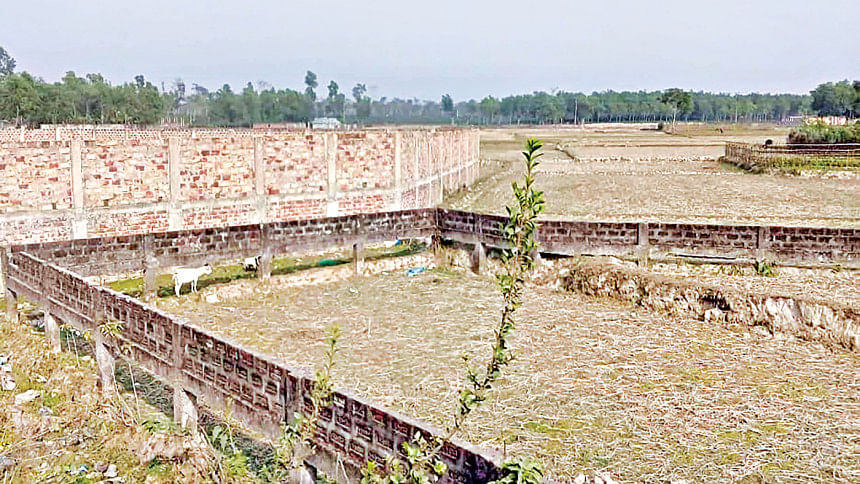Shrinking farmland to endanger food security

Non-agricultural use of land especially for the development purpose has recently seen a sharp increase in Sylhet division. By filling croplands, houses, roads, buildings and business establishments are being built in an unplanned manner.
In addition, continuous flooding has led to the decline of agricultural land. Thus, the occupation of agricultural land for non-agricultural purposes and decay of land due to repeated floods might jeopardize food security and cause environmental disasters.
According to a study, houses both residential and commercial and multi-storey buildings are being built on the land where different varieties of Aus, Aman and other crops were cultivated three times even a few years ago.
These structures are being built by filling up agricultural lands in different areas in the division, said Dilip Kumar Adhikari, additional director of Department of Agricultural Extension (DAE) in Sylhet.
Agricultural land in the country is declining at the rate of one per cent every year. At the same time, the ecological balance is being affected due to rapid urbanisation and development activities. As a result, agricultural production and fish population are also being affected.
Lack of agricultural land protection laws is paving the way for the unbridled trend of destruction of arable land, said Nurul Mohaimin Milton, general secretary of Bangladesh Paribesh Sangbadik Samity, Moulvibazar unit.
It is estimated that in the next decade, a huge amount of agricultural land will go to the non-agricultural sector. The agricultural land in Sylhet including two-crop and even three-crop land will also yield its place to non-agricultural use.
According to the district agriculture office, agricultural land is declining by 0.25 per cent or 45 hectares every year. In other words, 45 hectares of agricultural land is going to the non-agricultural sector every year.
Gopal Dev, deputy assistant agriculture officer of the upazila Agriculture Extension Department, said a large portion of the income of expatriates is being spent on the construction of houses, buildings and other structures. Seventy-five per cent of the land is roadside arable land.
According to the Kamalganj upazila Statistics Office, the amount of cultivable land in the upazila in 1996 was 47.681 acres. In 2008 the amount of cultivable land stood at 40.404 acres. A total of 7.28 acres of arable land was lost in the last decade.
However, according to the concerned, the current rate at which houses and establishments are being built filling up cultivable land the loss of land has almost doubled till the present time.
Toabur Rahman, a social worker, said the amount of agricultural land has drastically decreased. Farmers are facing food crises due to natural calamities including floods, droughts, storms, river erosion, heavy rains, hailstorms and landslides.
Siddiqur Rahman, a farmer in Kamalganj area, said in the absence of any policy to build houses on agricultural land, houses and institutions are being built randomly on arable land. As a result, food shortage is in the offing.
Shamshernagar Union Parishad Chairman Jewel Ahmed said even though people build houses by filling up agricultural land, no one wants to come and get any kind of permission.
Moulvibazar Agricultural Extension Department's District Training Officer Shamsuddin Ahmed told this correspondent that houses or structures should be built with the permission of the UP chairmen. Due to lack of awareness and ineffectiveness of policies, some people are constructing buildings by filling up the cultivable agricultural land.
Nandini Dev, deputy director of Bangladesh Statistics Department in Moulvibazar, said the total cultivable land in Moulvibazar in 1996 was 240,984 hectares. In 2008, it stood at 2,26,900 hectares.

 For all latest news, follow The Daily Star's Google News channel.
For all latest news, follow The Daily Star's Google News channel. 



Comments